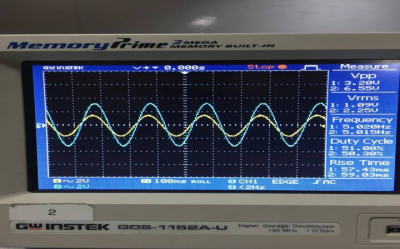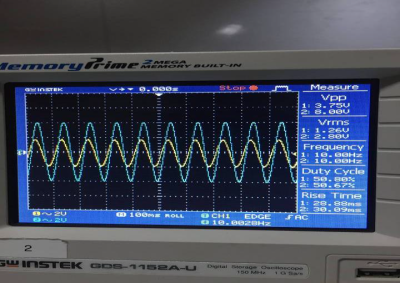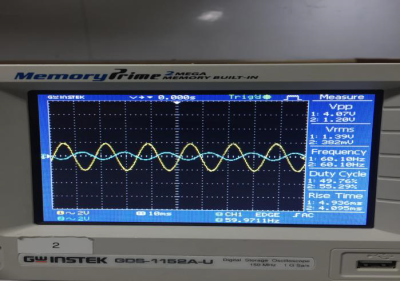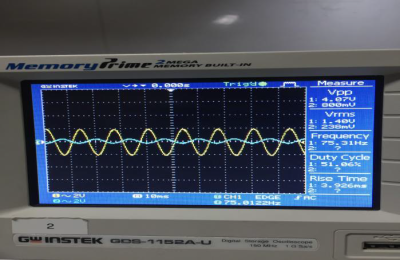What Will I Learn?
- About Filtering a Signal.
- How to design and construct a Low pass Filter.
- Calculate cut-off frequency
Requirements
- Basic skills in constructing Electronics circuit.
- Electronics Components.
- Electronics Laboratory Equipments.
Difficulty
- Intermediate
Tutorial Contents
In Electronics communication where it involves a great number of signal applications, filter plays a very important role in it, this experiment that I had done which is a Sallen key low-pass filter is one of it.
One of the most common application of this circuit is that when you have a certain signal that you want to receive without receiving other signals that are considered interferences around your receiver, this circuit can do the job and the concept is basically similar as the radio receiver the difference is that in radio receiver you can adjust or select the frequency that want by just turning the variable capacitor.
In this tutorial before we are going to do the steps in constructing the Sallen key low-pass Filter let us first define what filter is and how it works.
What is a Filter?
From the word itself filter means to remove or to filter something, In electronics it is just the same it’s just that we are dealing with signals, for newbie in engineering signals means that you are dealing with frequencies, which is a very important thing because almost everything is resonating at a certain frequency.
Filter composed of resistors and capacitors depending on the design this could be cascaded or just a single stage filter in this topic we are just going to use a single stage low-pass filter.
So how does it work? As we know capacitor is a device that stores and release energy the concept that this filter works is that because of resistor and capacitor arrangement in this case low-pass filter resistor is connected in series with capacitor, as the frequency changes there is an effect to the capacitor the higher the frequency capacitor acts like a short circuit that cause this frequencies to be attenuated to the ground (since the end of the capacitor is connected to ground)the frequency that they are going to filter depends in the values of capacitor and resistor we call this cut-off frequency in low-pass filter frequencies below it will be allow to pass and above it will be attenuated.
The formula for calculating the cut-off frequency is :

The Circuit Diagram:

Actual Circuit constructed

Electronics Components
Resistors – R1=R2=33k and RA=RB=10k 2pcs each.
Capacitors – C1=C2=0.22uf 2pcs and IC - LM-741 operational amplifier.
Procedure:
- Construct the circuit based in the diagram above and supply it with power source
- Input a certain signal from any signal generator to the circuit and generator signal must have an adjustable frequency.
- Measure the input and output signal through oscilloscope use channel 1 and 2 to visualize the effect of filtering.
- Calculate the cutt-off frequency to figure out where the frequency started to be filtered.
- Observe the filtering action above the cutt-off frequency since we are using low-pass filter.
Signal Filtering Action:

In this illustration we were inputting about 5 Hz signal so it does not yet start its filtering action but when it reaches above the calculated cutt-off frequency we will notice a lot of attenuation in that circuit the calculated cutt-off frequency would be 20 Hz, so above that signal will be attenuated.

This is at 10 Hz signal notice that signal still passes because we have not yet reach to 20 Hz above.


At 60 Hz there is already noticeable attenuation of its amplitude.

At 75 hz Signal is already being filtered we observed that its amplitude almost go straight means it is already a small amount of its amplitude.
In my circuit I had inputted frequencies started from 5 Hz to 100 Hz we can see frequencies below 20Hz which is the cut-off are still in volts unit while as we go beyond this cut-off it started to decrease until it goes millivolts(mV) that proves that signals above cutt-off were being filtered.

The Table above is the list of inputs and outputs I had gathered from the actual work of the circuit the measurements are based in the oscilloscope.
This tutorial would be great for engineers, student and also for electronics hobbyist.
Curriculum
No contribution at the moment
Posted on Utopian.io - Rewarding Open Source Contributors
Your contribution cannot be approved because it does not follow the Utopian Rules.
Utopuian rule
Explanation
You can contact us on Discord.
[utopian-moderator]
can i ask sir what are the open source repositories